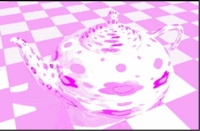 |
 |
 |
 |
 |
 |
 |
In printing, most color images can be reproduced using only four colors of ink or toner: the so-called "process" colors C (cyan), Y (yellow), and M (magenta), plus K (black). Color separation—breaking down original images into these four component colors—takes place during prepress. Each separation is a record of the C, M, Y, or K information in the original image; and each corresponds to a piece of film, a plate, and a color of ink on the press. (The film will not be present in computer-to-plate, computer-to-press, and digital print workflows. Digital printing also eliminates the plates, but the principles of color separation remain the same no matter what method is used.)
Separations are produced by photographing or digitally exposing the original image through successive filters of the additive primary colors R (red), G (green), and B (blue). Each filter creates a record of the additive color's subtractive complement: red yields the cyan separation, green the magenta separation, and blue the yellow separation. An additional, modified filter records the black separation. When overprinted, the separations recombine to re-create the hues and tones of the original (to the extent that the color gamut of the printing device will permit).
The diagram above shows the C, M, Y, and K separations individually and in the combinations CM, CMY, and CMYK. In proofing, the colors may be presented in this way as a set of hard-copy "progressives" showing the results of the overprint combinations.
RETURN TO FAST ACCESS MENU
RETURN TO SESSION OUTLINE